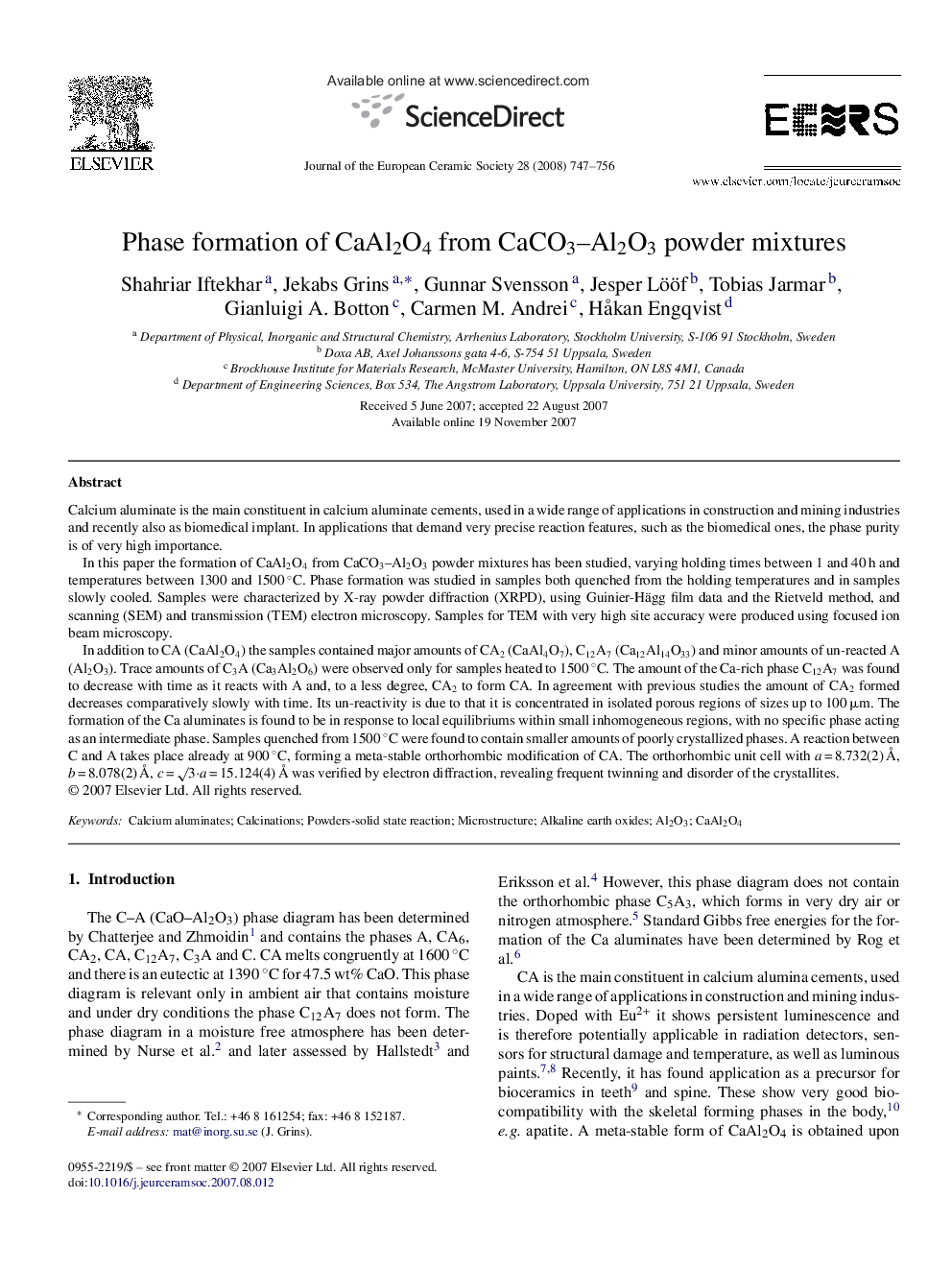| کد مقاله | کد نشریه | سال انتشار | مقاله انگلیسی | نسخه تمام متن |
|---|---|---|---|---|
| 1477416 | 991182 | 2008 | 10 صفحه PDF | دانلود رایگان |

Calcium aluminate is the main constituent in calcium aluminate cements, used in a wide range of applications in construction and mining industries and recently also as biomedical implant. In applications that demand very precise reaction features, such as the biomedical ones, the phase purity is of very high importance.In this paper the formation of CaAl2O4 from CaCO3–Al2O3 powder mixtures has been studied, varying holding times between 1 and 40 h and temperatures between 1300 and 1500 °C. Phase formation was studied in samples both quenched from the holding temperatures and in samples slowly cooled. Samples were characterized by X-ray powder diffraction (XRPD), using Guinier-Hägg film data and the Rietveld method, and scanning (SEM) and transmission (TEM) electron microscopy. Samples for TEM with very high site accuracy were produced using focused ion beam microscopy.In addition to CA (CaAl2O4) the samples contained major amounts of CA2 (CaAl4O7), C12A7 (Ca12Al14O33) and minor amounts of un-reacted A (Al2O3). Trace amounts of C3A (Ca3Al2O6) were observed only for samples heated to 1500 °C. The amount of the Ca-rich phase C12A7 was found to decrease with time as it reacts with A and, to a less degree, CA2 to form CA. In agreement with previous studies the amount of CA2 formed decreases comparatively slowly with time. Its un-reactivity is due to that it is concentrated in isolated porous regions of sizes up to 100 μm. The formation of the Ca aluminates is found to be in response to local equilibriums within small inhomogeneous regions, with no specific phase acting as an intermediate phase. Samples quenched from 1500 °C were found to contain smaller amounts of poorly crystallized phases. A reaction between C and A takes place already at 900 °C, forming a meta-stable orthorhombic modification of CA. The orthorhombic unit cell with a = 8.732(2) Å, b = 8.078(2) Å, c = √3·a = 15.124(4) Å was verified by electron diffraction, revealing frequent twinning and disorder of the crystallites.
Journal: Journal of the European Ceramic Society - Volume 28, Issue 4, 2008, Pages 747–756